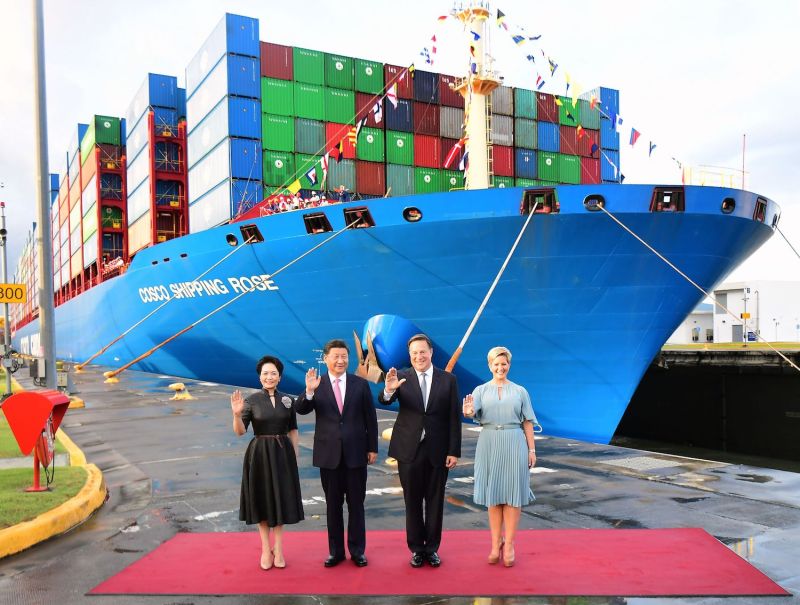In Panama’s presidential election, it’s what was left unsaid that resonates most.
The winner of the May 5 vote, Laurentino “Nito” Cortizo is a 66-year-old former cattle rancher. With swept-back hair, a gravelly voice, and a sharp black suit, he has the air of a late-era Johnny Cash. On TV, he walked the line: unleashing a few jabs at his relatively more corruption-tainted opponents and saying little that could jeopardize his lead. But there’s one topic that Cortizo and his opponents barely touched throughout the campaign: their country’s growing ties with China.
Following outgoing president Juan Carlos Varela’s unexpected decision to end diplomatic relations with Taiwan in order to establish formal ties with Beijing in June 2017, a tidal wave of Chinese investment is in the works. Major infrastructure projects and an imminent free trade agreement will allow Panama, a country of 4 million people, to maximize its potential as a hub for regional trade, manufacturing, and logistics and ease the strain on a financial services industry damaged by the Panama Papers. In return, for a relatively modest outlay, China is poised to become the most important commercial partner in a country that controls a key chokepoint of world trade.
It’s a win-win, both sides like to stress. But if tensions between the United States and China continue to escalate, Panama could become a key theater in their trade war.
For the seven presidential candidates in the recent election—all but one of whom were center-right, pro-business free-traders—Chinese cash is required to reinvigorate a stalled economy. The geopolitical effects and the long-term effect on sovereignty? Those are problems for future presidents. Cortizo, speaking to Reuters on Election Day, said the United States needed to pay more attention to Central America, saying, “While they’re not paying attention, another one is making advances.”
And that, said Carlos Guevara Mann, an associate professor in political science at Florida State University’s Panama campus, has “put Panama in the midst of the world’s biggest geopolitical rivalry: the trade war between the U.S. and China. No one has a plan.”
Recently, China has deepened ties with governments across Latin America and the Caribbean, 19 of which have officially signed up for Chinese President Xi Jinping’s signature $1 trillion Belt and Road infrastructure plan. It has encountered little pushback or competition from the United States. But Panama, given the United States’ history in the country and the unique importance of the interoceanic canal, could be where the two powers collide.
“The Panama Canal was the great work of the industrial age, as symbolic to the U.S. as the Great Wall is to China,” said Richard Koster, a novelist and historian who has been an analyst of Panamanian politics since he first set foot on the isthmus as a Marine in 1957. “The Chinese plan to develop a permanent presence in Panama.”
Xi’s designs on Panama are clear. In the nearly two years since the establishment of relations, China and Panama have signed over 30 bilateral agreements. In December 2018, Xi Jinping became the first Chinese premier to visit Panama, accompanied by an entourage of executives from dozens of companies in the country’s construction, telecommunications, and financial sectors. At the accompanying trade show in Panama City’s Atlapa Convention Center, outgoing president Varela was shown around stands representing firms including Huawei and China Railway Design Corporation—hawking a new $4 billion high-speed railway project for the country. At the event, copies of the Diario Chino Latinoamericano, a local paper serving the Chinese community, were handed out. On the cover, a giant photo of Xi was superimposed on an aerial shot of the Panama Canal.
Outgoing Panamanian President Juan Carlos Varela visits an exhibition for Chinese companies at Panama City’s Atlapa Convention Center following Chinese President Xi Jinping’s visit in December 2018.Mat Youkee
A century ago, U.S. President Theodore Roosevelt had his own Panama Canal photo-op: He was snapped at the controls of one of the colossal 95-ton shovels used to dig the passage. His two-week trip in 1906 was the first time a sitting U.S. president made a diplomatic trip abroad, and, in the words of the historian David McCullough, it was “one of those small, luminous events that light up an era.” That era could be coming to a close.

